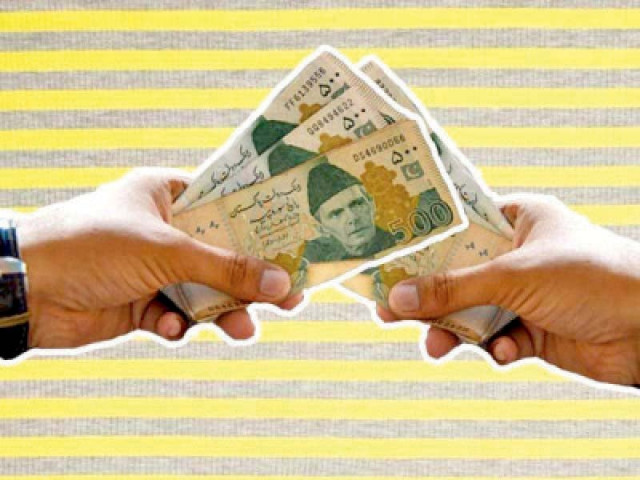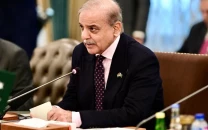Pakistan stares at third year of stagflation
APCC sets overambitious 12% inflation, 3.6% low growth targets

Pakistan will witness the third consecutive year of stagflation and the lives of the people will not see any major improvement, as the government on Friday approved the next fiscal year’s economic growth target at 3.6% and an overambitious inflation target of 12%.
Even the achievements of a relatively low economic growth and an overambitious inflation target will depend on political stability, currency market steadiness, and the timely signing of a new bailout package, according to the discussions that took place in the meeting of the Annual Plan Coordination Committee (APCC).
The APCC approved the annual plan for fiscal year 2024-25 and underlined that the rupee and the foreign exchange reserves would come under pressure in the new fiscal year due to “scheduled external debt repayments”.
The Annual Plan Coordination Committee (APCC) – the body mandated to approve the macroeconomic framework – recommended 3.6% Gross Domestic Product and 12% inflation targets for the final endorsement of the National Economic Council (NEC).
The central bank representative informed the APCC that the achievement of the 12% inflation target is dependent on the budget. He further stated that in case additional taxation measures are taken in the budget, the inflation may remain above this threshold, said the sources.
Under the SBP Act, the federal government sets the inflation target for the central bank. For this fiscal year the central bank failed to achieve the 21% inflation target.
However, there was uncertainty about the timing of the NEC meeting, as the government has yet to constitute the body that is mandated to approve Pakistan’s economic growth and national development plans. The planning ministry had hoped to call the NEC meeting on Monday before the departure of Prime Minister Shehbaz Sharif to Beijing. The prime minister chairs the NEC meeting and the chief ministers of the provinces are its members.
Around 3.6% targeted economic growth and an overambitious 12% inflation suggest that Pakistan will have another year of stagflation with low growth and high poverty and unemployment.
For this fiscal year, the government had set the GDP growth target at 3.5% but the provisional results showed that the growth remained at only 2.4% – that, too, was pulled by the agriculture sector.
“The scheduled repayments of external debt will put pressure on forex reserves and exchange rate”, according to the APCC. But it added that a positive outlook of remittances, exports and external inflows will mitigate these pressures.
The exchange rate on average recorded a depreciation of 13.6% to Rs284.1 during July-April period of this fiscal year compared to Rs245.4 in the same period of last year.
According to Dr Hafiz A Pasha, former finance minister, the average inflation in the next fiscal year may remain in the range of 19% to 20% because of the taxation measures and the exchange rate depreciation that the International Monetary Fund has projected.
The delivery of the 3.6% GDP growth target is even conditioned on many internal and external factors. “The economic outlook for 2024-25 depends upon keeping investor confidence upbeat, political stability, macroeconomic stabilisation under the new IMF programme, adequate progress on economic reforms, better availability of inputs, supportive monetary and fiscal policies, improved external inflows and favourable weather for the agriculture sector,” reads the plan.
During a recent fishing mission to Pakistan, the IMF did not allow the central bank to make any substantial reduction in the policy rate. The new annual plan further stated that the economic growth prospects hinges upon political stability, exchange rate stability on the back improvement in external account and external inflows, macroeconomic stabilisation under the IMF’s programme and expected fall in global oil and commodity prices.
Read Stagflation keeps growth low at 2.4%
The government has set a 2% agriculture sector growth target but stated that it will largely depend on favorable weather conditions and availability of water, certified seeds, fertilizers, pesticides, and affordable agriculture credit.
The industrial sector growth target is set at 4.4% on the back of expected large scale manufacturing growth of 3.5%. The Planning Commission said that the industrial sector is expected to get a boost from improved inputs and energy supplies on the back of anticipated fall in global oil and commodity prices, further easing of import restrictions, higher public sector expenditure and stability in exchange rate and a decline in interest rates.
Owing to these factors, prices of construction material are expected to decrease which will support the construction industry to achieve a growth target of 5.5% for 2024-25, it added.
The services sector is also expected to grow at 4.1% on the back of decent growth rate in commodity-producing sectors, which will complement the targeted growth in the services sector. Uptick of economic activity in industry especially manufacturing sectors will largely translate into better growth in wholesale & retail trade and transport, storage & communications, it added.
The government has set the next fiscal year’s total investment-to-GDP ratio target at 14.2% due to expected economic turnout, improved climate and political stability. This year the investment to GDP ratio plunged to half a century’s lowest level of 13.1%.
National savings are targeted at 13.3% of GDP for 2024-25 -marginally up from this year’s level of 13%.
The Planning Commission said that the fiscal deficit is expected to narrow down on the back of fiscal consolidation measures with a focus on enhancing tax revenue and curtailing non-development expenditures including subsidies. Monetary policy will be aligned with the objectives of inflationary expectations and growth revival, it added.
But the current account deficit is expected to widen in 2024-25 to 0.9% of the GDP with further easing of import restrictions for achieving the growth objectives especially for revival of the industrial sector.
What happened this year?
The Planning Commission’s assessment for the APCC showed that one of the factors for this year’s low economic growth and high inflation was political instability.
“Average inflation soared mainly due to significant currency depreciation amid political instability and dwindling foreign exchange reserves”, the Planning Ministry said. This led to higher fuel and input prices.
The constricted import demand, high costs of energy and borrowing, and weak domestic demand dampened the growth of industrial and services sectors. Both industrial and services sectors managed to grow by 1.2% each.
The APCC noted that the contractionary fiscal policy constrained the growth recovery. Both domestic and foreign investment remained dormant.
The stock market optimism was partially based on anticipated macroeconomic stabilization under the new IMF’s Extended Fund Facility (EFF) programme, and the likely SIFC induced flows of investment from the Middle East, it revealed.
Inflationary pressures remained elevated in 2023-24, primarily as a result of hike in domestic energy prices. To mitigate the high inflation, the policy rate was maintained at a historically high rate of 22% throughout the year.
This high policy rate also had severe implications for the fiscal policy as the government had to generate more revenues to finance a high fiscal deficit that largely stemmed from high domestic debt servicing, stated the APCC.
To mitigate the inflationary pressures, the State Bank of Pakistan (SBP) raised the policy rate, resulting in increased borrowing costs for businesses. Other factors contributing to high inflation included reversal of energy subsidies, re-introduction of petroleum levy, and import controls.
Current account deficit substantially narrowed to $200 million during the first 10 months of this fiscal year and around 94.8% lower compared to $3.9 billion in the corresponding period of last year.
The government said that despite restrained domestic and external demand, inflationary pressures continued to persist at elevated levels though remained on a downward trajectory since January 2024.


















COMMENTS
Comments are moderated and generally will be posted if they are on-topic and not abusive.
For more information, please see our Comments FAQ